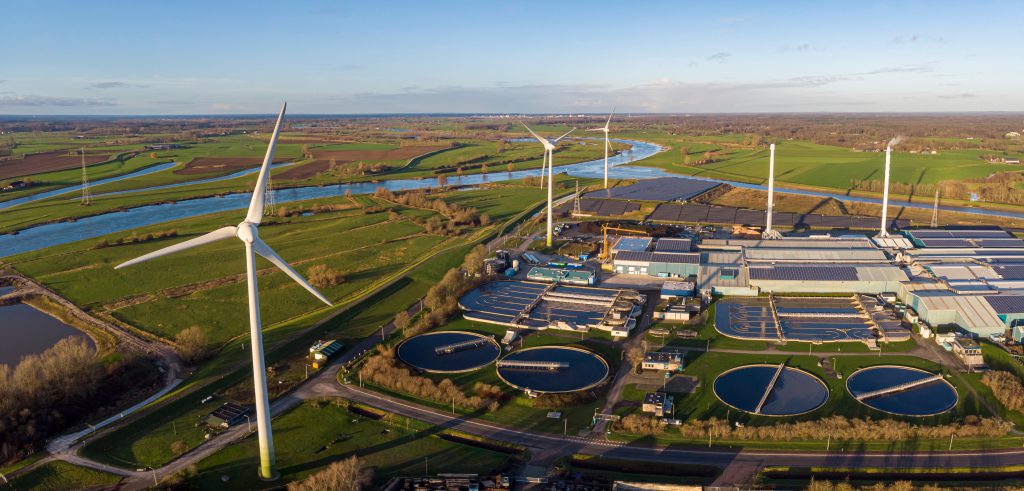Climate change management strategy in the insurance industry
Insurance companies, as professional risk managers, are ensuring the proper integration of climate risk into catastrophic risk models, premium calculation, and policy supply. The challenge is to offer innovative and specialized products that build financial resilience to extreme weather events, encourage the reduction of GHG emissions by clients and third parties, and support production initiatives based on renewable and cleaner energies.
In recent years we have seen the materialization of the climate change effects in Colombia, there have been several natural disasters, such as heavy rainfall that causes floods and landslides, long drought periods that affect crops and lead to forest fires, and the melting of snow-capped mountains, which affects natural freshwater springs, among others.
Fasecolda believes that the best way to prepare the country to face climate change is through effective risk management, promoting the assessment of the impact and its management in advance. Insurance is a financial tool that provides support when facing adverse conditions. When policyholders buy a policy, they are encouraged to create awareness of the risk and to take actions to manage it and prevent its materialization.
In addition, the insurance sector has been working to ensure that insurers consider the exposure of their investment portfolios to climate change. The implementation of a low-carbon economy may represent both losses and opportunities for companies that issue financial instruments, it will depend on their strategy to face the climate change demands. The correct inclusion of information related to this change in investment decision-making processes is key to avoiding losses and maximizing profits.

How do we deal with climate change?
The insurance industry has been adapting to the new conditions raised by climate change, adjusting existing products and creating new ones to mitigate risk.
- Adjustment to current products
Current products are adjusted according to the changing conditions linked to climate change, to which policyholders are exposed, in order to provide greater protection and safety. We are working on the following:
- Assessment of exposure level
- Definition and action-taking for risk management
- Adjustment to offered products
- Development of new products
In terms of new products, the insurance sector has been offering index-based or parametric policies to mitigate the impacts of climate change. These are products that provide protection when a predefined catastrophic weather event occurs and there are losses of assets and investments. They are currently used for natural catastrophe risks such as frost, floods, and earthquakes, among others. For these protection products design, it is set a statistical index that measures deviations from normal levels of environmental parameters such as rainfall, temperature, wind speed, and other climatic variables. These insurance products compensate for direct property damage and protect policyholders when facing direct or indirect economic losses. (WB, 2020) (SwissRe, 2019).
Catastrophe index-based insurance covers business interruption caused by devastating natural events. Besides insurance, clients receive information and incentives that help them take actions to reduce risk and strengthen resilience to natural disasters. These products also target the most vulnerable and low-income population (Micro, 2018). Regarding the impact of climate change on the agricultural sector, plant and yield insurance have been developed, in which, from the planting stage, a yield per hectare is covered for the farmer; if the expected yield is not produced, the policy pays the difference between what was previously guaranteed and what was finally harvested. For this type of policy, aspects such as climatic events occurring during the policy term, the crop, the area, and the technology used are considered (Proagro, 2018).
- Forward-looking analysis of climate change scenarios
Fasecolda partnered with 2 Degrees Investing Initiative (2DII) to conduct climate scenario analysis on the insurers’ investment portfolio, both at the individual insurer level and at the aggregate market level, to identify the possible transition risks to which they may be exposed. The executive summary, published in Fasecolda Magazine, is available here or you can read the attached document.
- Georeferencing system to measure vulnerability to climate change
Insurance companies use geographic information systems (See GIS page) that help insurance companies in underwriting, risk analysis, and claims management. These systems include tools to measure the threat and vulnerability of risks to different natural or anthropic phenomena, as well as climate change scenarios.
- · Strengthening the insurance sector performance
Fasecolda provides training on climate risk to strategic areas within the insurance companies; for this purpose, we have created a specialized course on climate risk management at the Sustainability School. This tool has made it possible to transfer best practices in sustainability to the insurance sector, in order to comply with our strategy of sustainable growth and strengthen the country’s resilience in case of future unfavorable eventualities must be faced.
We invite you to watch the following video in which we summarize our progress at the Fasecolda Sustainability School.
Interinstitutional public-private management to promote actions to address climate change
Fasecolda is part of the National Climate Change System (Sisclima) established by the national government under Decree 289-2016, which aims to interact, coordinate, monitor, and evaluate policies, standards, strategies, plans, and actions on climate change adaptation and greenhouse gas mitigation.
Fasecolda participates in the Sisclima financial management committee, which has been promoting a strategy for climate change to be managed from a risk perspective. This strategy seeks to prepare the country to face natural catastrophes caused by climate change, through effective risk management, impact assessment, and its coordination in advance.
Fasecolda has also been actively contributing to the development of mechanisms for adaptation to climate change, through the implementation of projects and the support of initiatives. The recent assessment of exposure to transition risks in our investment portfolios, or the support to the Colombian Climate Asset Disclosure Initiative (CCADI), financed by the UK Government, are recent examples of our contributions. We also promote training programs for insurance companies and work to make climate management explicit in our products.
Project to build a long-term strategic vision to face climate change
Fasecolda and KPMG have been developing a strategy for the management of climate change risks and opportunities in investment and underwriting, which sets the characteristics of risks faced by the insurance sector at the national level. The strategy seeks to establish the current status of good practices in the insurance sector regarding climate risk management and to consolidate a diagnosis in order to build the vision and strategy of the insurance sector for climate change management.

